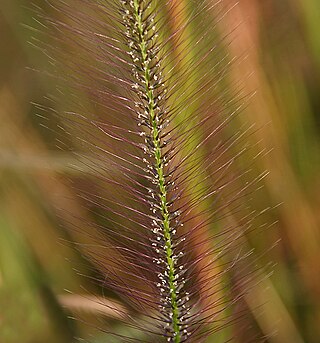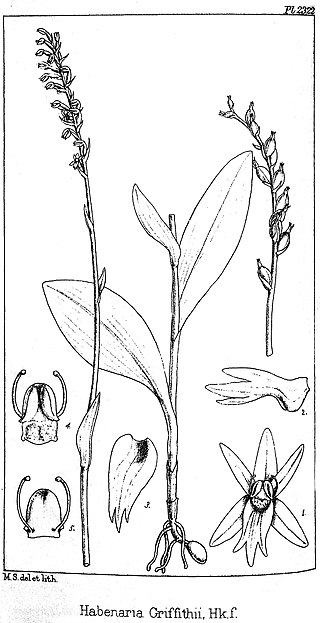
Royal Botanic Gardens, Kew is a non-departmental public body in the United Kingdom sponsored by the Department for Environment, Food and Rural Affairs. An internationally important botanical research and education institution, it employs 1,100 staff. Its board of trustees is chaired by Dame Amelia Fawcett.

Sir William Jackson Hooker was an English botanist and botanical illustrator, who became the first director of Kew when in 1841 it was recommended to be placed under state ownership as a botanic garden. At Kew he founded the Herbarium and enlarged the gardens and arboretum. The standard author abbreviation Hook. is used to indicate this person as the author when citing a botanical name.

Richard Spruce was an English botanist specializing in bryology. One of the great Victorian botanical explorers, Spruce spent 15 years exploring the Amazon from the Andes to its mouth, and was one of the very first Europeans to observe many of the places where he collected specimens. Spruce discovered and named a number of new plant species, and corresponded with some of the leading botanists of the nineteenth century.

Mellissia was formerly a monotypic genus in the family Solanaceae with the single species, Mellissia begoniifolia, endemic to the island of Saint Helena. It was named by Joseph Dalton Hooker in honour of John Charles Melliss, a 19th-century engineer and amateur naturalist who worked on Saint Helena.

Hymenosporum is a monotypic genus of trees in the family Pittosporaceae. The sole included species is Hymenosporum flavum, commonly known as native frangipani, found in the rainforests and wet sclerophyll forests of New Guinea, Queensland and New South Wales. Despite its common name, it is not closely related to the frangipani, but is related to the widespread genus Pittosporum.

Tiarella trifoliata, the three-leaf foamflower, is a species of flowering plant in the family Saxifragaceae. The specific name trifoliata means "having three leaflets", a characteristic of two of the three recognized varieties. Also known as the laceflower or sugar-scoop, the species is found in shaded, moist woods in western North America.

Perotis is a genus of Asian, African, and Australian plants in the grass family.

Festuca incurva is a species of flowering plant in the family Poaceae, native from the Mediterranean to Central Asia and Pakistan. When placed in the monotypic genus Psilurus as Psilurus incurvus, it was the only species.
Axonopus singularis is a species of flowering plant in the grass family Poaceae, native to Brazil. When placed in the monotypic genus Centrochloa as Centrochloa singularis, it was the only species.

Corethrogyne is a monotypic genus of flowering plant in the family Asteraceae. Its only species is Corethrogyne filaginifolia, known by the common names common sandaster and California aster.
Chloris flagellifera is a species of flowering plant in the grass family Poaceae, native from Morocco in North Africa through the Arabian Peninsula to northwestern India.

Nardophyllum is a genus of South American flowering plants in the tribe Astereae within the family Asteraceae.

Nicotiana acuminata is a species of wild tobacco known by the English common name manyflower tobacco. It is native to Argentina and Chile but it is known on other continents, including North America and Australia, as an introduced species.

Leichhardtia flavescens, synonym Marsdenia flavescens, is a vine found in eastern Australia. Common names include hairy milk vine, yellow milk vine and native potato.

Gennaria griffithii is a species of flowering plant in the family Orchidaceae, native from Afghanistan to China. It is a terrestrial species, with a small tuber and small greenish flowers, found in damp places. It has a complicated taxonomic history, having been transferred between genera several times. When placed in a genus on its own it is correctly known as Dithrix griffithii. In 2015, it was transferred to the genus Gennaria.
Carpolobia is a genus of plants in the milkwort family (Polygalaceae) that are native to tropical Africa and Madagascar. It was first written about in 1831 by George Don, at which point 4 species were identified. In 1849, the number of accepted species went down to 2. The other 2 became part of the legume family. The two species that remained, C. alba and C. lutea, were described as closely resembling each other. It was initially in the Polygaleae tribe before being split off in 1992 along with the genus Atroxima to form the new tribe of Carpolobieae.
Treutlera is a monotypic genus of flowering plants belonging to the family Apocynaceae. It only contains one known species, Treutlera insignisHook.f.

Peperomia maculosa, commonly known as spotted-stalked peperomia and spotted peperomia, is a species of plant in the genus Peperomia. Its native range is from Mexico to northern South America.

Aquilegia skinneri, commonly known as the Mexican columbine or Skinner's columbine, is a species of flowering plant in the buttercup family.













